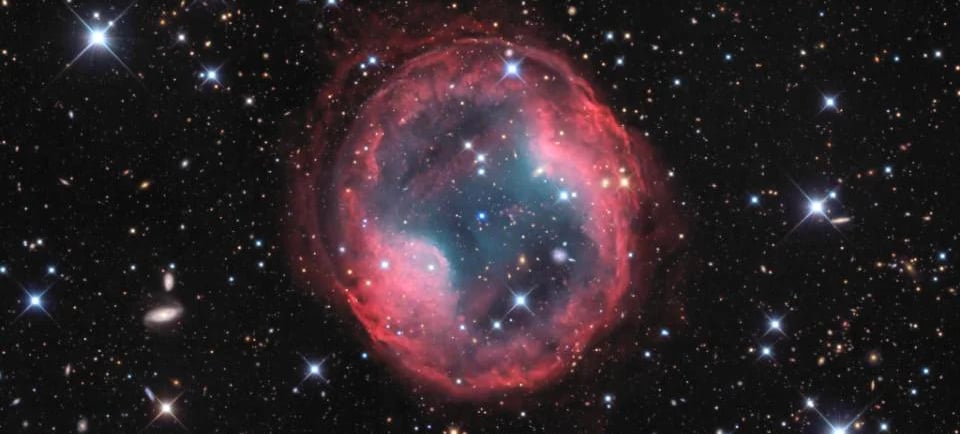PK 164+31.1: The Jones-Emberson 1 Nebula


Introduction to the PK 164+31.1 Nebula
The PK 164+31.1, commonly known as the Jones-Emberson 1 nebula, is a fascinating astronomical object situated in the constellation Lynx. This celestial wonder is classified as a planetary nebula, characterized by a distinct structure and beautiful glowing shell of gas. Located approximately 1,600 light years from Earth, the PK 164+31.1 is of significant interest to both amateur astronomers and astrophysicists alike.
Characteristics and Composition
The PK 164+31.1 nebula is recognized for its large size and notably low surface brightness, making it a challenging yet rewarding target for observational study. With a magnitude of 14, it is not visible to the naked eye; however, through telescopes, its intricate features and delicate formations can be appreciated. The central star of this nebula, exhibiting a magnitude of 16.8, is a blue white dwarf that plays a crucial role in the evolution of the nebula itself. As the central star sheds its outer layers, it contributes to the rich tapestry of gases and plasma surrounding it.
The Importance of the Jones-Emberson 1 Nebula
Studying the PK 164+31.1 nebula provides vital insights into the life cycle of stars and the processes associated with planetary nebulae. These regions act as cosmic recycling centers, returning materials back to the interstellar medium. The study of such nebulae can reveal fundamental information about stellar evolution and the chemical enrichment of the universe. As astronomers continue to observe and analyze the PK 164+31.1, they uncover the intricate interplay between stars and their gaseous exteriors, deepening our understanding of cosmic phenomena.
Moreover, the low surface brightness and the vast distance of the PK 164+31.1 lend to its complexities, presenting both challenges and opportunities for astronomers. Leveraging advanced observational techniques such as spectroscopy allows scientists to explore the composition and dynamics of the nebula in new and profound ways. The enchanting properties of the PK 164+31.1 demonstrate why it remains a subject of intrigue and study in the field of astronomy.
